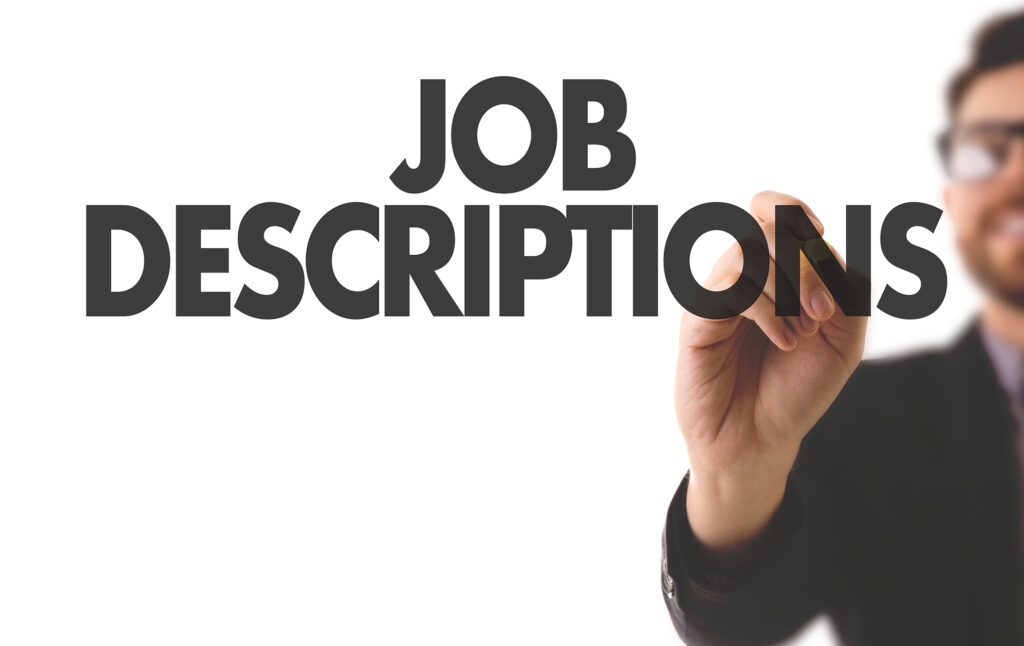How to Write a Good Job Description: 7 Best Tips for Success

Unlocking Success: The Art of Writing an Effective Job Description
The importance of an effective job description
In today’s such a hug neck to neck competitive job market, attracting top talent is crucial for the success of any organization. And one of the key tools in attracting the right candidates with a right talent is a well-written job description.
A job description serves as a blueprint for a position, outlining the responsibilities, qualifications, and expectations for potential applicants. It not only helps job seekers understand what the role entails but also enables recruiters to effectively evaluate candidates.
Writing an effective job description is an art, we will explore the art of writing an effective job description and how it can unlock success in the hiring process.
What is a job description?
A job description is a comprehensive document that comprises the duties, responsibilities, qualifications, and skills required for a specific position within an organization.
It serves as a primary communication tool between employers and job seekers, providing essential information about the role and setting clear expectations. A well-crafted job description not only attracts qualified candidates but also helps in aligning organizational goals with individual objectives. It serves as a foundation for recruitment, performance evaluation, and employee development.
A job description typically includes a job title, a summary of the role, key responsibilities, qualifications and skills required, reporting structure, salary range, and any other relevant information. It provides a snapshot of the role and acts as a first impression for potential candidates. A clear and concise job description can significantly impact the quality of applicants and ensure that the right talent is attracted to the position.

Components of a well-written job description
Crafting an effective job description requires careful consideration of various components. Each section of the job description plays a vital role in attracting the right candidates and setting realistic expectations. Here are the key components of a well-written job description:
1. Job Title:
The job title should be easily understood by job seekers & accurately reflect the position. It should be concise, specific, and align with industry standards. A clear job title helps candidates quickly identify if the role matches their skills and experience.
2. Summary of the Role:
A brief overview of the position gives candidates an understanding of the purpose and objectives of the role. It should highlight the key responsibilities, main duties, and the impact the position has on the organization. The summary should be engaging and compelling to capture the attention of potential candidates.
3. Key Responsibilities:
This section outlines the primary duties and tasks associated with the role. It provides a detailed breakdown of the day-to-day activities and expectations from the employee. It is essential to prioritize responsibilities and clearly define what is expected from the candidate to ensure alignment with organizational goals.
4. Qualifications and Skills:
Listing the required qualifications, skills, and experience helps filter out unqualified candidates and attract those who meet the minimum requirements. It is important to differentiate between “must-have” and “nice-to-have” qualifications to ensure the candidate pool is not unnecessarily limited.
5. Reporting Structure:
Including information about the reporting structure, such as the position’s supervisor or team, provides candidates with an understanding of where they fit within the organization. This can be crucial for candidates evaluating career growth opportunities and potential for advancement.
6. Salary Range:
While some organizations may choose not to disclose the salary range in the job description, including it can attract candidates who are aligned with the organization’s compensation structure. It can also help filter out candidates who have salary expectations that are significantly higher or lower than what the organization can offer.

Writing job descriptions that attract top talent
Writing a job description that attracts top talent requires a strategic approach. It is not merely about listing the responsibilities and qualifications but also about effectively communicating the organization’s values, culture, and growth opportunities. Here are some tips to craft job descriptions that stand out:
1. Use an Engaging Tone:
An engaging tone can make a job description more appealing to potential candidates. Instead of using dry, corporate language, infuse the description with the company’s personality and values. Use action verbs and descriptive language to create excitement and capture the attention of job seekers.
2. Highlight Unique Selling Points:
Every organization has unique selling points that differentiate it from competitors. Whether it’s a flexible work environment, opportunities for professional development, or a supportive company culture, highlight these aspects in the job description. Emphasize what makes the organization an attractive place to work.
3. Focus on Impact:
Rather than focusing solely on tasks and responsibilities, highlight the impact the position has on the organization and its goals. Candidates are often motivated by the opportunity to make a difference and contribute to something meaningful. Clearly articulate how the role contributes to the overall success of the organization.
4. Be Specific and Concise:
Avoid vague language and be specific about the expectations and requirements for the role. Use bullet points to clearly outline responsibilities and qualifications. Keep the job description concise, focusing on the most important information. Long, convoluted descriptions can be overwhelming and deter potential candidates.
5. Include Keywords:
In today’s digital age, optimizing job descriptions for search engines is essential. Research relevant keywords and include them naturally throughout the description. This will increase the visibility of the job posting and attract candidates who are actively searching for similar positions.
Job description best practices
Crafting an effective job description involves following best practices that have proven to attract the right candidates. Here are some best practices to consider:
1. Regularly Review and Update:
As the organization evolves, so do the roles and responsibilities within it. It is crucial to regularly review and update job descriptions to ensure they accurately reflect the current requirements and expectations. This allows for better alignment between the organization and potential candidates.
2. Seek Input from Stakeholders:
Collaboration with relevant stakeholders, such as hiring managers and team members, can provide valuable insights into the role and its requirements. Seek input from those who are directly involved in the day-to-day operations to ensure the job description accurately reflects the needs of the position.
3. Use a Consistent Format:
Using a consistent format for all job descriptions enhances readability and allows for easy comparison between positions. This creates a standardized approach to recruitment and helps job seekers quickly identify key information. Consistency also reflects professionalism and attention to detail.
4. Ensure Compliance with Employment Laws:
It is essential to ensure that job descriptions comply with employment laws and regulations. Avoid any language or requirements that may be discriminatory or in violation of employment standards. Consult legal counsel or HR professionals to ensure legal compliance.
5. Proofread and Edit:
Before publishing a job description, thoroughly proofread and edit it to eliminate any errors or inconsistencies. A well-edited job description reflects professionalism and attention to detail. It also ensures that potential candidates are not deterred by simple mistakes.
Job description templates and examples
Creating a job description from scratch can be a time-consuming task. Thankfully, there are numerous resources available that provide ready-to-use job description templates and examples. These templates serve as a starting point and can be customized to fit the specific needs of the organization. Here are some popular sources for job description templates and examples:
Online job boards and recruitment websites
Professional HR organizations and associations
Industry-specific publications and websites
HR software and applicant tracking systems (ATS)
It is important to remember that while templates can be helpful, they should be used as a guide and customized to accurately reflect the unique requirements of the position and organization.
How to optimize job descriptions for search engines
In today’s digital landscape, optimizing job descriptions for search engines is crucial to attract the right candidates. Here are some tips to optimize job descriptions for search engines:
1. Research Relevant Keywords:
Identify the keywords and phrases that potential candidates are likely to use when searching for similar positions. Use tools like Google Keyword Planner or other keyword research tools to identify popular search terms. Incorporate these keywords naturally throughout the job description.
2. Use Heading Tags:
Utilize heading tags (H1, H2, H3, etc.) to structure the job description and highlight important sections. Search engines place greater emphasis on heading tags, so incorporating relevant keywords in these tags can improve search engine visibility.
3. Optimize Meta Description:
The meta description is the short snippet that appears below the job title in search engine results. It should provide a concise summary of the job description, including relevant keywords. A well-optimized meta description can entice job seekers to click on the job posting.
4. Include Location Information:
If the position is location-specific, include the location in the job description. This helps job seekers who are searching for opportunities in a specific area. It also improves the chances of the job posting appearing in local search results.
5. Link to Relevant Pages:
If the organization has a careers page or additional resources related to the position, include links to these pages in the job description. This not only provides additional information to job seekers but also improves the overall search engine visibility of the organization’s website.

The role of a recruitment agency in crafting job descriptions
Recruitment agencies play a critical role in the hiring process, including crafting effective job descriptions. Here’s how recruitment agencies can contribute to the writing of job descriptions:
1. Market Insights:
Recruitment agencies have in-depth knowledge of the job market and can provide valuable insights into industry trends, candidate expectations, and competitor benchmarks. Leveraging their expertise can help create job descriptions that align with market demands.
2. Language and Tone:
Recruitment agencies are experienced in tailoring job descriptions to attract the right candidates. They can help choose the appropriate language and tone that resonates with the target audience. Their expertise ensures that job descriptions are engaging and compelling.
3. Candidate Screening:
Recruitment agencies often assist in the initial screening of candidates, matching their skills and experience with the job requirements. By involving them in the job description creation process, they can provide valuable input on the qualifications and skills required.
4. Continuous Optimization:
Recruitment agencies can provide feedback on the effectiveness of job descriptions based on their experience and candidate feedback. They can identify areas for improvement and suggest changes to maximize the impact of job descriptions.
Common mistakes to avoid in job descriptions
While crafting an effective job description is important, it is equally crucial to avoid common mistakes that can hinder the hiring process.
Here are some common mistakes to avoid on preparing Job Description:
1. Using Jargon and Buzzwords:
Using industry-specific jargon and buzzwords can confuse potential candidates and deter qualified applicants. It is important to communicate the job requirements and responsibilities in clear, concise language that is easily understood by a wide audience.
2. Overemphasizing Preferred Qualifications:
While it is important to list preferred qualifications, overemphasizing them can discourage qualified candidates who may not meet every single requirement. Focus on the essential qualifications and skills required for the role and use preferred qualifications as a secondary consideration.
3. Neglecting the Company Culture:
Job descriptions that solely focus on the role and responsibilities may fail to communicate the company’s culture and values. Highlighting the company’s culture and work environment can attract candidates who align with the organization’s ethos